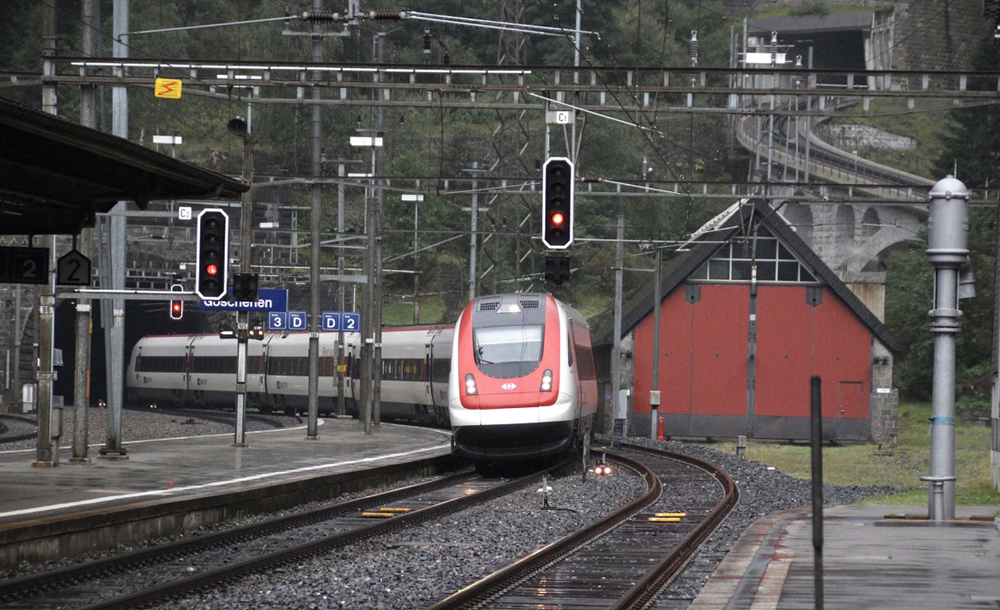
The Gotthard Base Tunnel sustained far more damage than had previous been believed in last week’s derailment, and it will likely be early 2024 before both bores of the world’s longest rail tunnel are back in service, the Swiss Federal Railways (SBB) announced today (Aug. 16).
The tunnel has been closed since Aug. 10, when 23 cars of a freight train derailed in an accident attributed to a broken wheel [see “Broken wheel blamed …,” Trains News Wire, Aug. 14, 2023].
SBB CEO Vincent Ducrot told a press conference “the fact that such an accident could still happen hits us hard,” and apologized to both passenger and freight customers for the disruptions brought by the tunnel’s closure: “The teams deployed are doing everything they can to ensure that safe rail traffic through the Gotthard Base Tunnel is possible again as quickly as possible.”
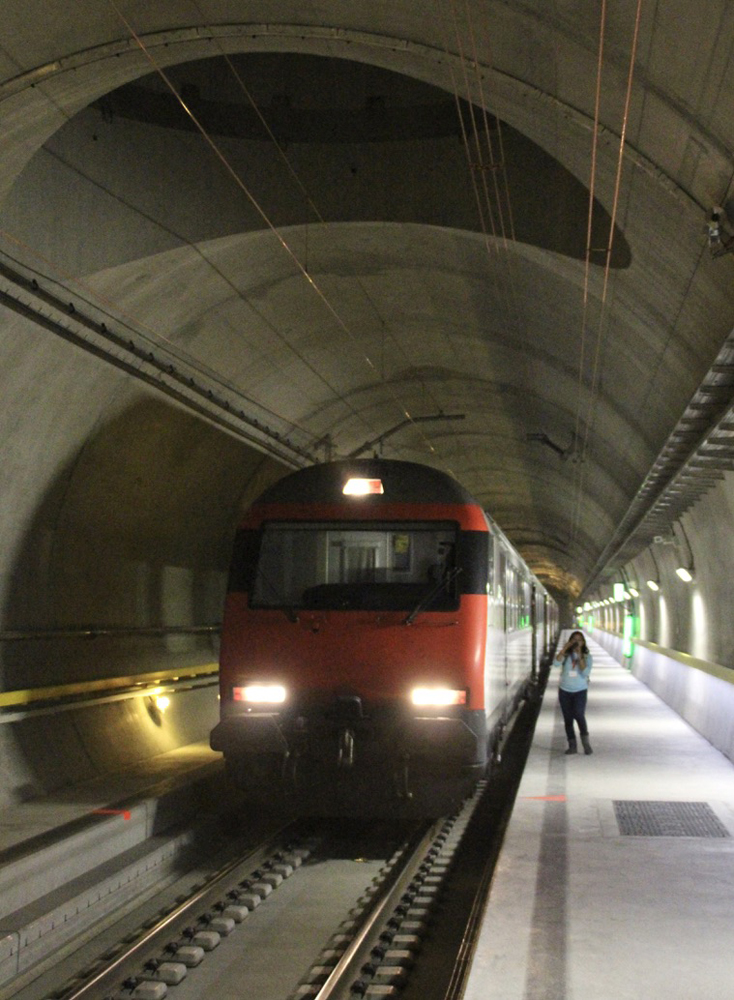
As translated by Google, SBB’s press release (available here in German) says 8 kilometers of track and 20,000 concrete ties will need to be replaced in the west tube of the 57.1-kilometer (35.5-mile) tunnel, and that the track bed is badly damaged in the area of the crossover at the Faido multifunction area, which also includes ventilation and emergency equipment. The lane change gate, which provides fire protection and air separation between the two track tubes in case of an emergency, is badly damaged. The custom-made equipment will need to be replaced, as will damaged signal equipment.
Current efforts are focused on restoring use of the undamaged east tube for freight service by Aug. 23. This will be made possible through use of a temporary, mobile gate normally used during maintenance work.
However, at least initially, passenger trains will not be allowed to use the reopened single tube, because tunnel safety procedures call for use of the second tube to evacuate passengers in the event of an emergency. SBB said it is working with the Federal Office of Transport to determine “safe solutions” that would allow some passenger traffic to use the base tunnel in a single-tube configuration, but no estimate for such operations is currently possible.
Translation of an information update for travelers (available here in German) indicates timetables on the Gotthard route have now been updated to reflect reroutes over the historic, or panoramic, Gotthard route, which add one hour to travel times — two hours for most of those making international trips to Italy, because of a required train change. The rerouted trains offer 30% less capacity than those operating before the derailment because the older route cannot handle SBB’s newer bilevel passenger trains. SBB said it is determining whether it can add additional seating capacity on the panoramic route.
Freight traffic is currently operating using the full capacity of the panoramic route between 11 p.m. and 5 a.m. This is handling most inland and national traffic, SBB says. But most trans-European and import-export traffic cannot use the historic Gotthard route; that traffic is being sent the Lötschberg tunnel to the west, which can only handle about 30% of the usual traffic.
The investigation continues into the cause of the derailment. The 30-car train included cars from five locations in Italy; that train had stopped earlier in its journey because of a stuck brake on one car, but that is not believed to have involved the car that first derailed.
Meanwhile, the Swiss news agency Keystone-SDA reports technicians from the Italian State Railways have offered to work with their counterparts in Switzerland and Germany to help resolve the Gotthard issues, while the Swiss newspaper Blick quotes the head of a logistics firm as saying it will take up to four weeks to address the current backlog of freight traffic.






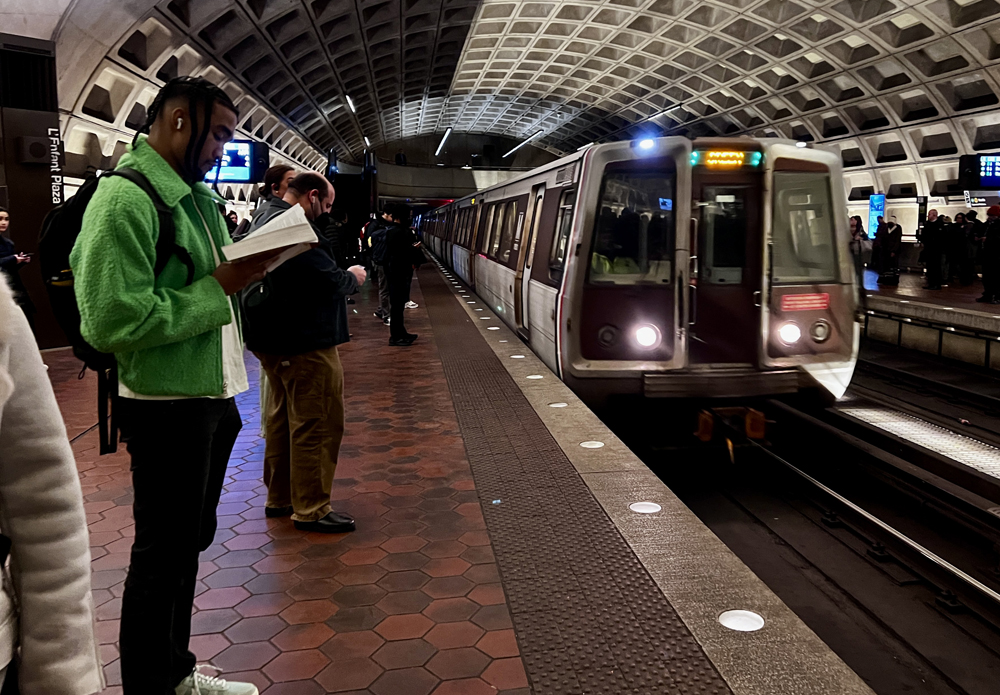
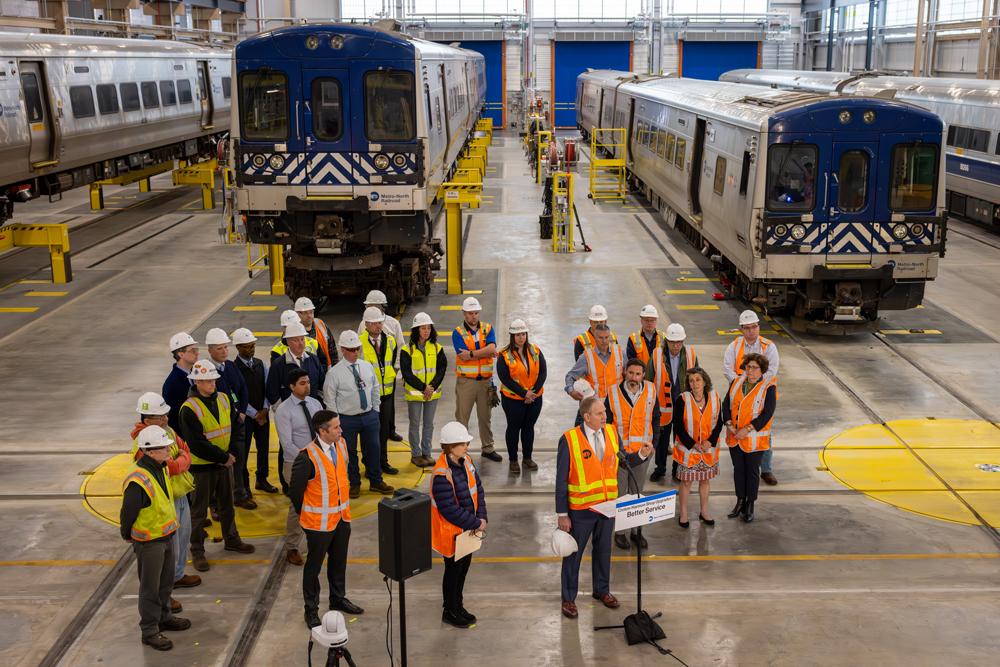
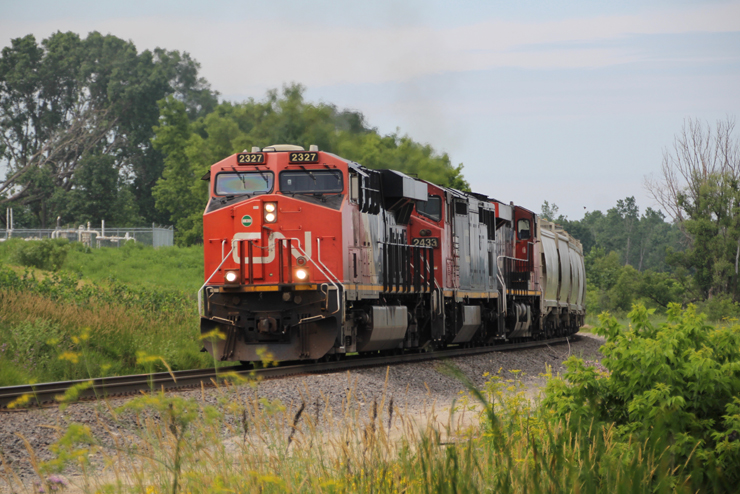





I’m assuming the turnouts are standard and are in stock with SBB (FFS) but the “lane change gates” would be custom and must be replaced by the vendor. There aren’t many base tunnels or lane change gates in the world.
Switches and gates in close proximity and no parts. What could go wrong and at what cost if?
The “lane change” is a set of double crossovers to allow trains to switch from one tube to the other. The “lane change gate” is a sliding barrier between the two tubes, that keeps each tube a separate entity.
They’re big and expensive.
SBB top management has finally made the anticipated (?) statement on the subject. “Bon courage” to SBB crews!
Dr. Güntürk Üstün
No replacement lane change gate? What other critical components are not stockpiled?